Followers of The Guerilla Chemist know that when he formulates a supplement, he’s going to go big and novel. When he first launched the Chemix brand, we saw that in a major way with the stim-driven Chemix Pre Workout.
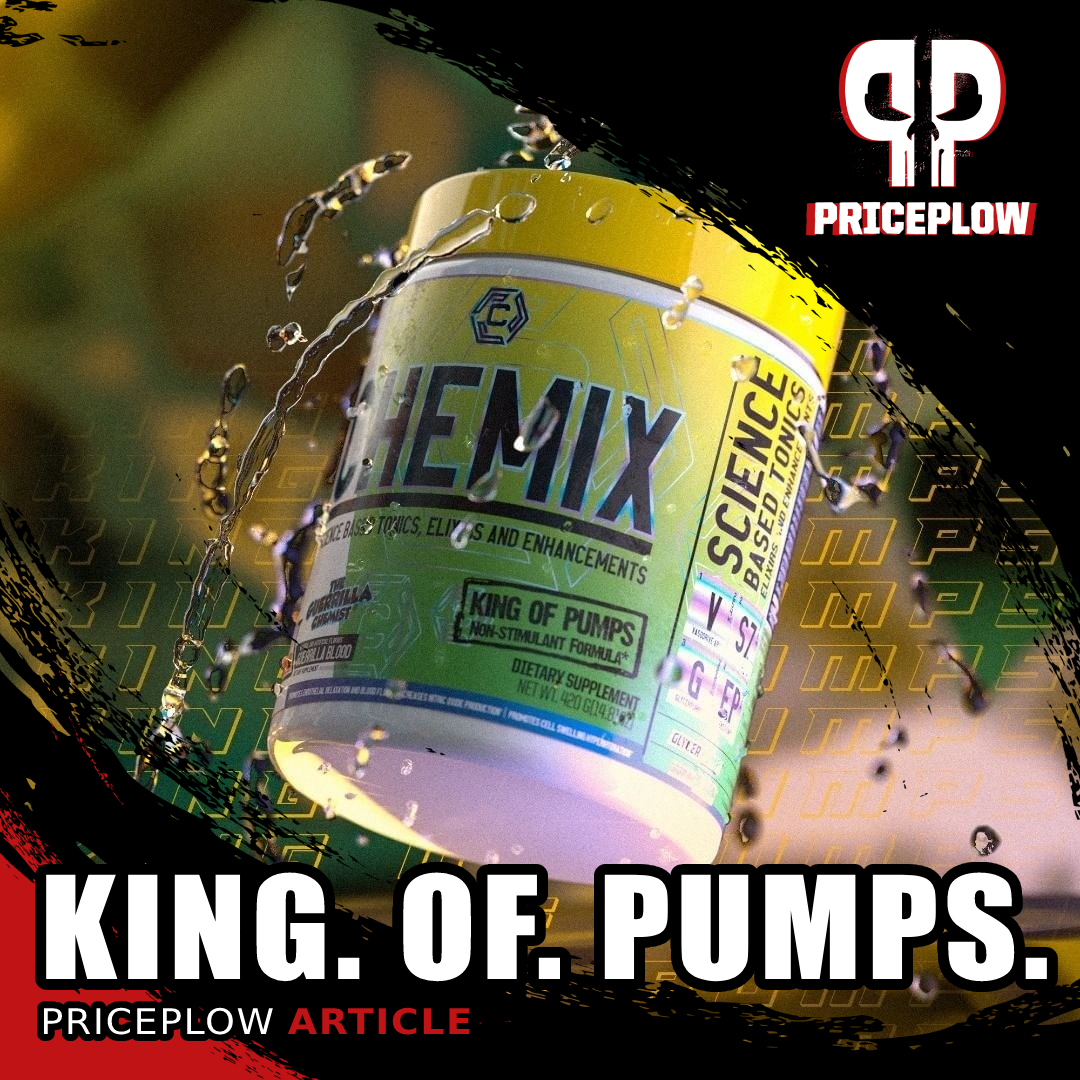
Prepare to meet the King of Pumps from Chemix, run by The Guerrilla Chemist. In this article, we detail Endo-Pump, an ingredient developed by TGC himself!
The King of Pumps
But after that came King of Pumps, the Chemix stimulant-free pre-workout counterpart. Here, we’re treated to an ultra-premium non-stimulant pump product that has 7 ingredients — four of which are trademarked, and one that Guerrilla created himself!
We’re talking about Endo-Pump, an ingredient that Chemix put together that utilizes three different botanicals to hit at least three pathways. The ingredient has a crazy-looking name, but don’t be alarmed – we’ve got it all covered below.
But first, sign up for our Chemix alerts, because we’re hearing a new flavor may be on the way and we’ll hit you up when it comes:
Chemix King of Pumps – Deals and Price Drop Alerts
Get Price Alerts
No spam, no scams.
Disclosure: PricePlow relies on pricing from stores with which we have a business relationship. We work hard to keep pricing current, but you may find a better offer.
Posts are sponsored in part by the retailers and/or brands listed on this page.
This area is reserved for Team PricePlow's upcoming Ingredients video.
Subscribe to our channel and sign up for notifications so you catch it when it goes live!
King of Pumps Ingredients
-
L-Citrulline – 6g
King of Pumps unsurprisingly starts with the base of most pre-workout supplements — L-citrulline, and at a dose that’s twice what we’ve seen in some clinically successful studies looking at nitric oxide and performance.[1] L-citrulline is an amino acid found in watermelon[2-5] that is the precursor to another amino acid, L-arginine, which is subsequently a precursor to a precious little gas molecule known as nitric oxide (NO).[6]
An enzyme known as eNOS (endothelial nitric oxide synthase) converts arginine into nitric oxide,[6] which then causes blood vessels to vasodilate, leading to an expansion that yields greater overall blood flow[7,8] — meaning pumps. This effect also increases CGMP (cyclic guanosine monophosphate),[6,9] a unique second messenger molecule that positively regulates numerous organ systems, including the cardiovascular system.[10]
Better blood flow also brings more nutrients, and going beyond incredible pumps, the citrulline-driven vasodilation effect has been shown to provide other downstream benefits:[1,11-15]
- Greater ATP production
- Increased work output
- Better recovery
- Improved oxygen uptake
- High-intensity exercise performance gains
- Improved growth hormone release
Citrulline bests arginine
Guerrilla is quick to point out that using citrulline outperforms supplementing arginine in generating nitric oxide despite the fact that citrulline must get converted to arginine first.[7] Citrulline bypasses the “arginine paradox”[16] — arginine in the digestive tract has a far greater binding affinity to the arginase enzyme than it does to eNOS, and the arginase enzyme breaks supplemental arginine down far too quickly for us to get as much nitric oxide production. This is known as the “first-pass effect”.[17-20] Besides, high-dose arginine leads to terrible GI upset,[21,22] which you don’t want in the gym.
Instead, with citrulline, it stays intact longer, and then gets converted into arginine in the kidneys,[20] skipping arginase and allowing for more arginine to get converted into nitric oxide by eNOS. Citrulline is the way.
What if stacking this with Chemix Pre-Workout?
This stack can get you up to 12 grams of citrulline if you fully dose both – right around the body’s reasonable threshold for the ingredient!
Things can get even crazier. If you were to stack 6 grams of citrulline here with anywhere from 4-6 grams of citrulline of the ultra-intense Chemix Pre-Workout (which we’d get in 1.333 to 2 scoops), there’s even more data to cite! A study saw that citrulline conversion to arginine actually hits its “law of diminishing returns” somewhere between 10 and 15 grams![2,23] The researchers found that in terms of arginine production, 10 grams of citrulline significantly outperforms 5 grams, although the results begin to wane after 10 grams or so.[23]
Point being – if you stacked this with another pre workout, you could get even more insane pumps – but that quite frankly might not be necessary or even wanted with the insane formula Guerrilla Chemist put together here.
Generally, users will use 1.5 scoops of each, but some days, you double scoop everything.
Regardless, we’re off to a great start, so now let’s look at some mega-dosed hydration agents:
-
Betaine Anhydrous – 5g
Over the years, we’ve become quite familiar with the osmotic hydration ingredient in betaine (also known as trimethylglycine), but Guerrilla was one of the first to truly push the dosage — once again going twice the clinical dose in a single scoops. It’s also dosed this high in two scoops of his stimulant-based Pre-Workout, quadrupling down on the ingredient.
The placebo effect was definitely strong with this group. But… the real gains obliterated placebo in due time![24]
Why? Because it’s an osmolyte methyl donor[25,26] that does nearly everything, including supporting athletic performance enhancement,[27-32] muscle-building,[24,33] fat-loss,[34,35] cardiovascular health,[26,27,36-38] and even protecting cells from heat shock.[27,39]
That’s all incredible, but Guerrilla will be the first to tell you that the main reason betaine was included in King of Pumps was to induce intracellular hyperhydration! Here, we get back to betaine’s effects as an osmolyte, where it helps boost water flow into cells.[25] This induces cellular swelling, providing a unique pump effect that differs from nitric oxide.
In addition, this osmotic effect is responsible for many of the endurance and performance enhancements cited above, as well as the hydration benefits — alongside plenty of water and electrolytes, this (and the next ingredient) are absolute musts if training in extreme heat.
Again, note the huge dose – several studies cited above used 2.5 grams per day,[24,29-34] but King of Pumps doubles that, bringing even more research into the fold.[27,28]
To top it off, it turns out that betaine supplementation can promote a bit of nitric oxide production itself![38] But we’re really here for the cell hydration pumps — and we top it off with even more from glycerol below:
-
GlycerSize (65% Glycerol Powder) – 3g
Athletes using glycerol not only urinate less, but they are able to tolerate exercise in heat better![40]
Continuing with the hyperhydration trend, The Guerilla Chemist adds yet another osmotic agent to King of Pumps — and it’s one he claims to be even more powerful than betaine. We’re talking about glycerol, which is also known as glycerin.[41] Glycerol is a sugar alcohol that copiously hydrogen bonds with water — upon doing this, it can drive the combination into blood, cells, and muscle tissue, increasing total water volume and osmotic pressure.[42] This creates an intense cellular hydration effect, leading to pumps synergizing with betaine’s.
Through hydration gains, most of the athletic research on glycerol consumption is with respect to endurance. Researchers have found that trained athletes are able to last 21% longer than placebo in tests where they cycle to exhaustion.[43] Additionally, they were able to do it with reduced cardiovascular stress — their heart rates were lower while lasting longer![43]
This was replicated in further studies that compared glycerol + water + carbohydrates against water + carbohydrates, where the glycerol-enhanced group lasted 23% longer.[43]
Power gains beyond the endurance
King of Pumps isn’t really an endurance supplement, although all of these ingredients can lead to it. What about strength and power? A study published in 2012 showed that glycerol was able to boost both aerobic and anaerobic power output after 20 days of consumption.[44]
And going further, the added water from glycerol brings a benefit of better blood flow,[45] as evidenced in tests on forearm tests where the water retention effects also reduced strain on the cardiovascular system.
The key with King of Pumps, due to 5 grams of betaine and 3 grams of 65% glycerol, is to drink plenty of water. More than normal! But don’t worry – researchers have repeatedly found that glycerol consumption leads to less bathroom use,[40,46] which is a good thing when in an intense training session.
Just like with betaine, there are thermoregulation benefits to be had as well[40,45] – King of Pumps is definitely a wise supplement to use if spending a lot of time in extreme heat – even if you’re not working out!
You can learn more about glycerol in our main article titled Glycerol: The Ultimate Guide for Hydration, Heat Protection, and Pumps.
-
Endo-Pump – 800mg
The king of King of Pumps, and Guerrilla Chemist’s own ingredient, Endo-Pump is actually a blend of three different botanicals that have three different mechanisms:
- Punica granatum (pomegranate extract)
- (-) Epicatechin
- 5-hydroxy-2-(4-methoxyphenyl)-8-(3-methyl-but-2-enyl)-7-[(2S,3R,4S,5S,6R)-3,4,5-trihydroxy-6-(hydroxymethyl)oxan-2-yl]oxy-3-[(2S,3R,4R,5R,6S)-3,4,5-trihydroxy-6-methyloxan-2-yl]oxychromen-4-one
Let’s go through them one by one:
-
Pomegranate Extract
Research shows that beyond its nitric oxide boosting effects, natural pomegranate juice greatly enhances performance and recovery, while also reducing markers of muscle damage (soreness).
Pomegranate extracts have repeatedly been shown to boost nitric oxide levels,[47-53] reliably improving blood flow[51] and lowering blood pressure.[54] It differs from many botanicals in a few big ways, though.
First, pomegranate is able to increase plasma nitrate and nitrite levels,[48] targeting another pathway that can support nitric oxide production. Second, it’s able to protect nitric oxide against oxidative damage,[55] and since it’s not in S7, this will synergize very well with that effect. Third, it contains anabolic constituents such as oleanolic acid, gallic acids, ursolic acid, and ellagic acid.[50] Ellagic acid leads to greater production of mTOR-boosting urolithin B,[56] while ursolic acid has anabolic properties of its own.[57]
We don’t know what King of Pumps is pulling out of this pomegranate, but we do know that the fruit in general has been shown to be ergogenic and performance-enhancing.[51,52]
-
(-) Epicatechin
Epicatechin is a popular muscle-building ingredient found in chocolate that’s been shown to boost strength and muscle growth,[58,59] improve endurance / reduce fatigue,[60] and of course, increase nitric oxide production.[61]
When news articles come out discussing the health benefits of dark chocolate, epicatechin is often the ingredient doing the heavy lifting.
-
The third one…
We’ll spare ourselves from naming the third ingredient (it took 88 seconds to type out above), but the key takeaway is that Guerilla Chemist says this is a PDE inhibitor (specifically a PDE5 inhibitor), which is similar to how ED drugs work.
The background is that cyclic nucleotide phosphodiesterases (PDEs) regulate intracellular levels of messenger molecules like cyclic guanosine monophosphate (CGMP) and cyclic adenosine monophosphate (cAMP).[62,63] We covered CGMP above in the citrulline section – it’s a secondary messenger that citrulline helps raise.[6,9,10]
Phosphodiesterase 5 (PDE5) is a PDE that’s specific to CGMP, and it’s expressed in nearly all tissues, but mostly smooth muscle (as well as pancreatic and cardiovascular cells).[62] PDE inhibitors are thus a group of compounds that help keep PDE low, further elevating CGMP — far beyond what citrulline would ever do — and hence their use in ED drugs.[64]
Our take? This chemical is icariin, which is a known PDE5 inhibitor found in horny goat weed.[62,65-67] To top it off, icariin can also promote eNOS,[68] resulting in vasorelaxation[69] and synergizing with citrulline. While icariin is often used in male performance supplements, it’s not used as often in pump supplements, and we’re not exactly sure why, because it seems very effective at this job.
Guerilla Chemist knows this, and that’s why he developed Endo-Pump with three different mechanisms in mind.
-
VasoDrive-AP – 254mg
The Guerrilla Chemist joins Mike and Ben on the PricePlow Podcast for a second time to talk the latest Chemix supplements! Listen to episodes #020 and #036 with TGC — we’re due for another one soon!
VasoDrive-AP is a unique ingredient that includes two lactotripeptides — isoleucyl-prolyl-proline (IPP) and valyl-prolyl-proline (VPP) – each with three (tri) amino acids (peptides) in a row, both of which are taken from casein protein (lacto).
Together, these two compounds have been shown to inhibit the enzyme angiotensin converting enzyme (ACE),[70,71] which causes vasoconstriction.[72] By inhibiting the ACE enzyme, you’re then able to reverse vasoconstriction and further dilate blood vessels[73] — exactly what we want.
This effect increases blood vessel diameter and thus lowers the blood pressure. There are over thirty studies on these lacto-tri-peptides, which are extremely well covered in the meta-analysis titled “Casein-Derived Lactotripeptides Reduce Systolic and Diastolic Blood Pressure in a Meta-Analysis of Randomised Clinical Trials.”[70]
Guerilla Chemist included this to hit a completely different pathway in King of Pumps, rather than just piling on the nitric oxide synthase pathway like many companies do, and 254 milligrams is the clinical dose.
-
Gymnena Sylvestre (std. to 75% gymnemic acids) – 250mg
Now it’s time to talk carbs! While The Guerrilla Chemist has great knowledge of low-carb diets and has tinkered with plenty of them over the years, he knows that carbohydrates are what get massive amounts of glycogen into muscle cells. If you’re chasing pumps, you should probably be considering some kind of carbohydrate strategy.
Gymnema Sylvestre is an ingredient that’s common in glucose disposal supplements, but less common in pump pre-workouts. Standardized for gymnemic acids, it’s here to help shuttle carbs into the muscle cells.
Gymnema increases insulin release,[74] and insulin draws carbohydrates into cells. Carbohydrates also bring a lot of water with them. So by drawing them in, you’re boosting not only glycogen storage, but water as well.
Most studies on gymnema revolve around its ability to control blood sugar levels[74-76] — it’s not “studied” as a pump ingredient. It has, however, been shown to do exactly what Guerrilla Chemist touts — better insulin secretion.[74] In addition, we’ve seen a unique ability to regenerate pancreatic islet cells, so gymnema may have some additional health benefits to keep you more insulin sensitive in general.
This is the carb pump – it’s not related to blood flow, nitric oxide, or even water retention, but is all about blasting your muscles with glycogen. You will, however, want some carbs to come along for the ride, so this will work best if you’re not extremely fasted.
Last: If you’re interested in this category of supplement ingredients and want to explore further, Chemix GDA is a must-see.
-
S7 – 100mg
S7 is a trademarked ingredient that’s short for SPECTRA 7, which is a blend of natural botanicals (green coffee bean, green tea, turmeric, tart cherry, blueberry, broccoli, and kale) that have antioxidant properties. Together, they’ve been shown to increase the bioavailability of nitric oxide.[77] Realize that nitric oxide is a free radical — it wants to bind to something. If it does that, it becomes inactive.
What happens is that the antioxidants in S7 bind to free radicals that would otherwise bind with nitric oxide, thereby improving the amount and duration of nitric oxide generated from your workout and L-citrulline.
This is a more defensive strategy, but an important one to have in a supplement named King of Pumps – you can’t just boost nitric oxide without protecting against its capture!
Flavors Available
Listen to Guerrilla Talk about King of Pumps himself
King of Pumps, King of Pathways
This is a truly advanced stimulant-free pre workout pump supplement, as expected from The Guerilla Chemist. It hits numerous pathways, and hits them very hard. While some formulators put together incredible ingredient profiles, Chemix goes beyond that with King of Pumps — by inventing their own ingredient!
It goes without saying that this is an advanced supplement. Part of this includes that the user shouldn’t just take it and expect the supplement to do all of the work. There are two factors to reiterate:
- It will work far better if taken with copious amounts of water (for betaine and glycerol).
- It will work best if taken with carbohydrates in the system (thanks to gymnema).
These aren’t 100% necessary, but if you don’t do these two things, you’re losing the efficacy of nearly half of the ingredient profile – and that’d be a waste on an ultra premium product.
So get ready to drink up, because there’s a new king town.
Chemix King of Pumps – Deals and Price Drop Alerts
Get Price Alerts
No spam, no scams.
Disclosure: PricePlow relies on pricing from stores with which we have a business relationship. We work hard to keep pricing current, but you may find a better offer.
Posts are sponsored in part by the retailers and/or brands listed on this page.
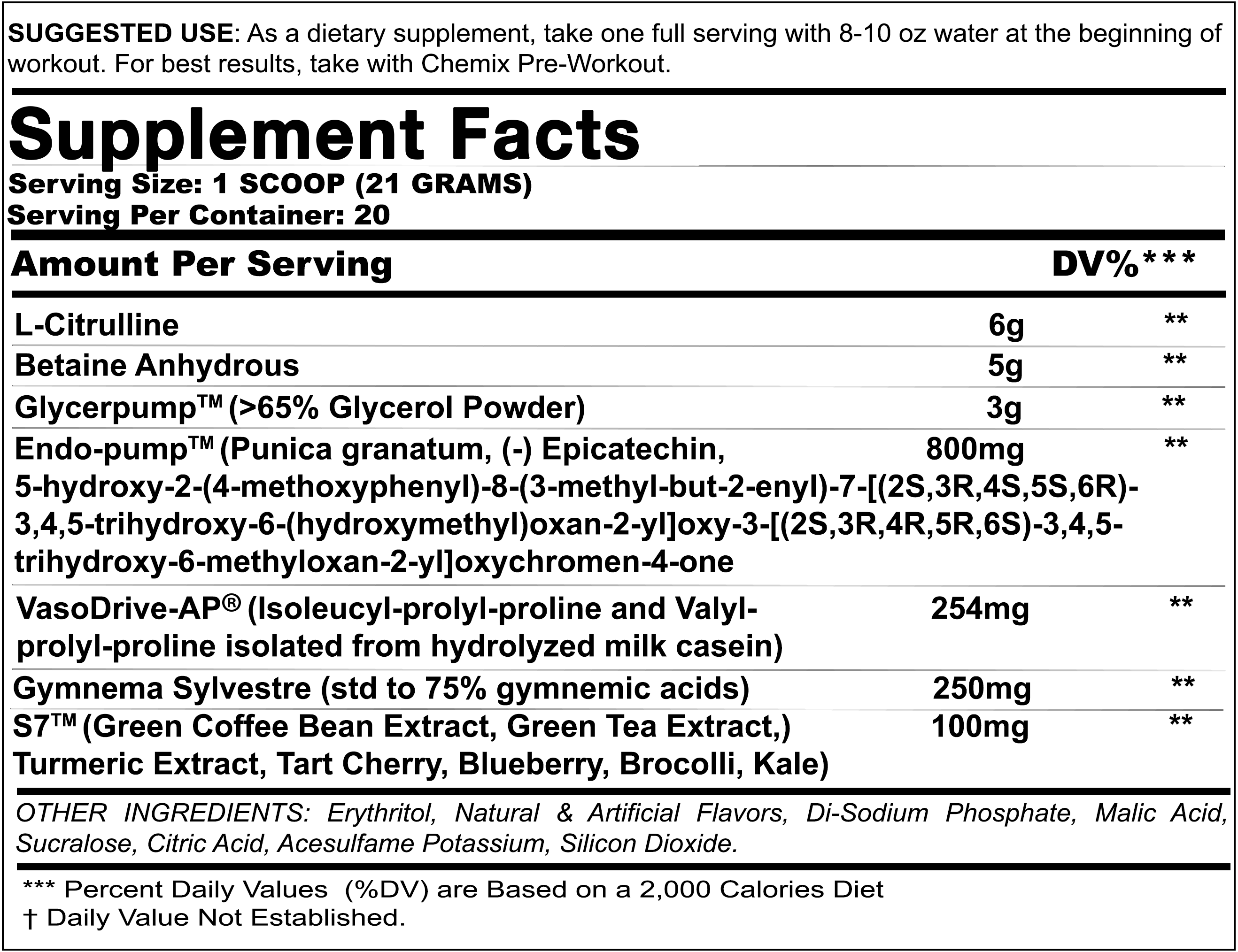
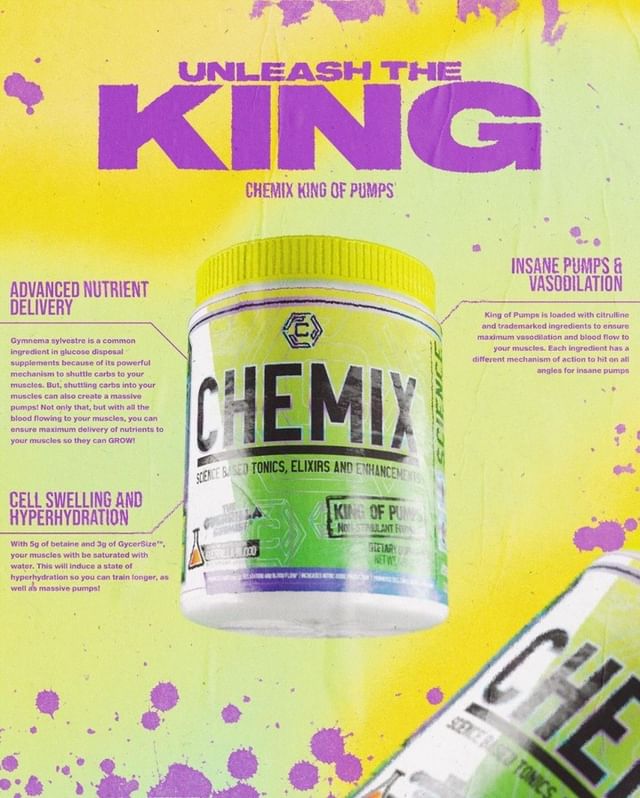
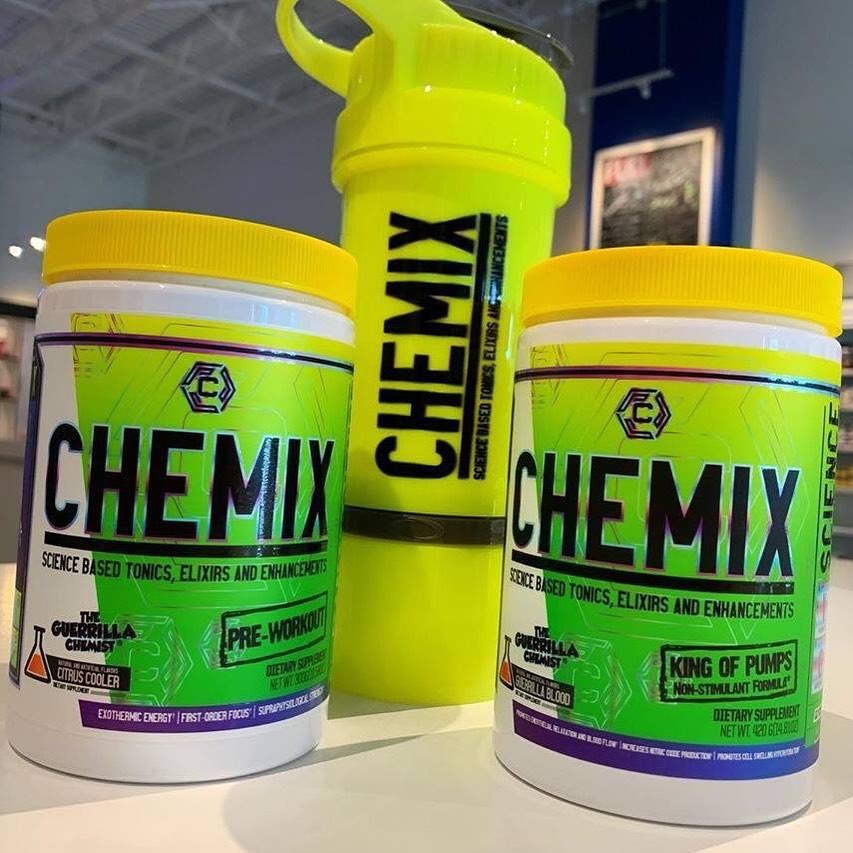
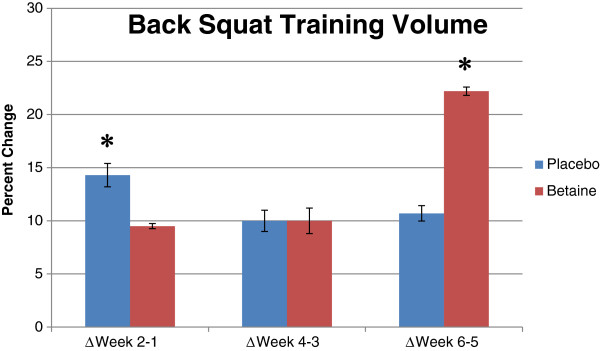
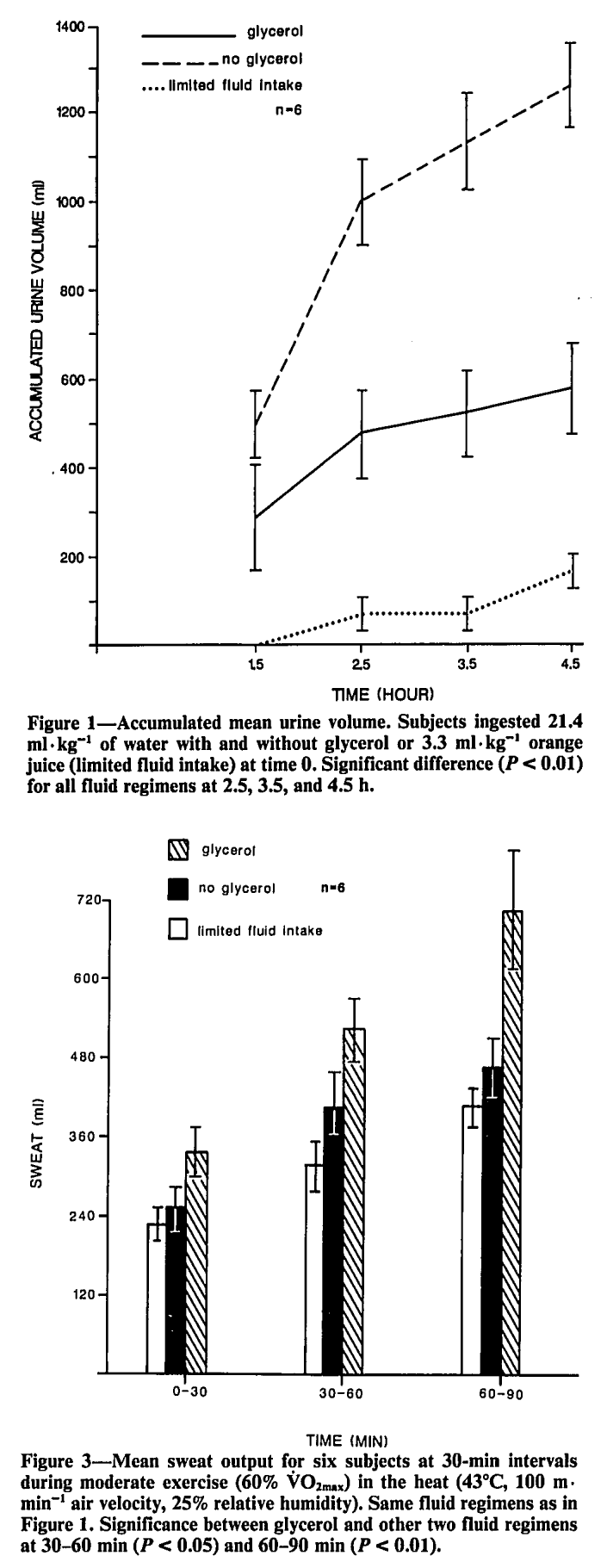
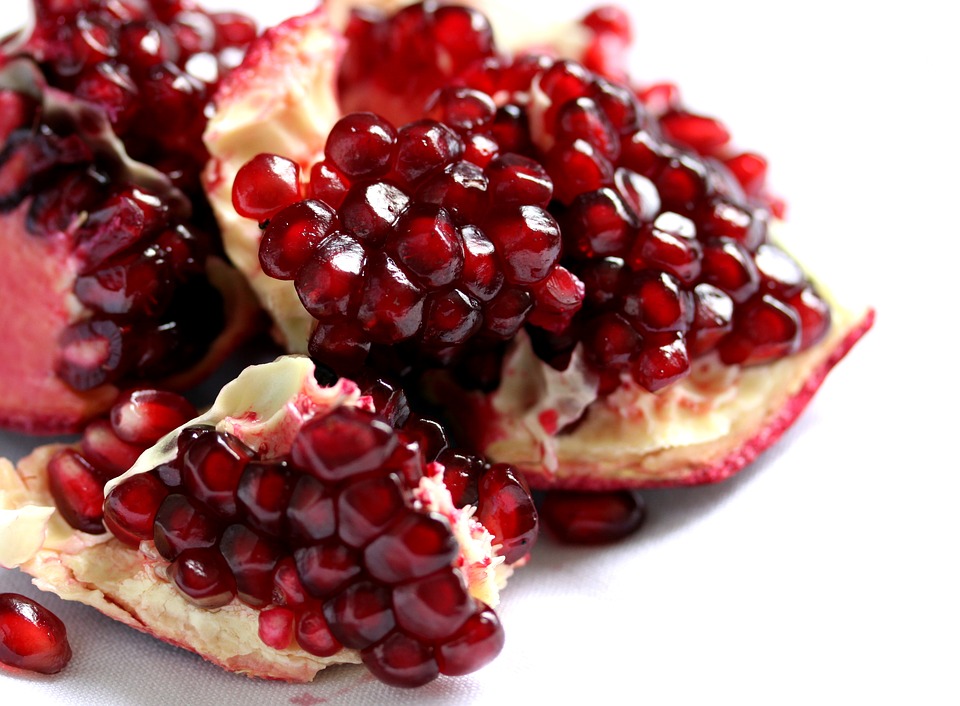
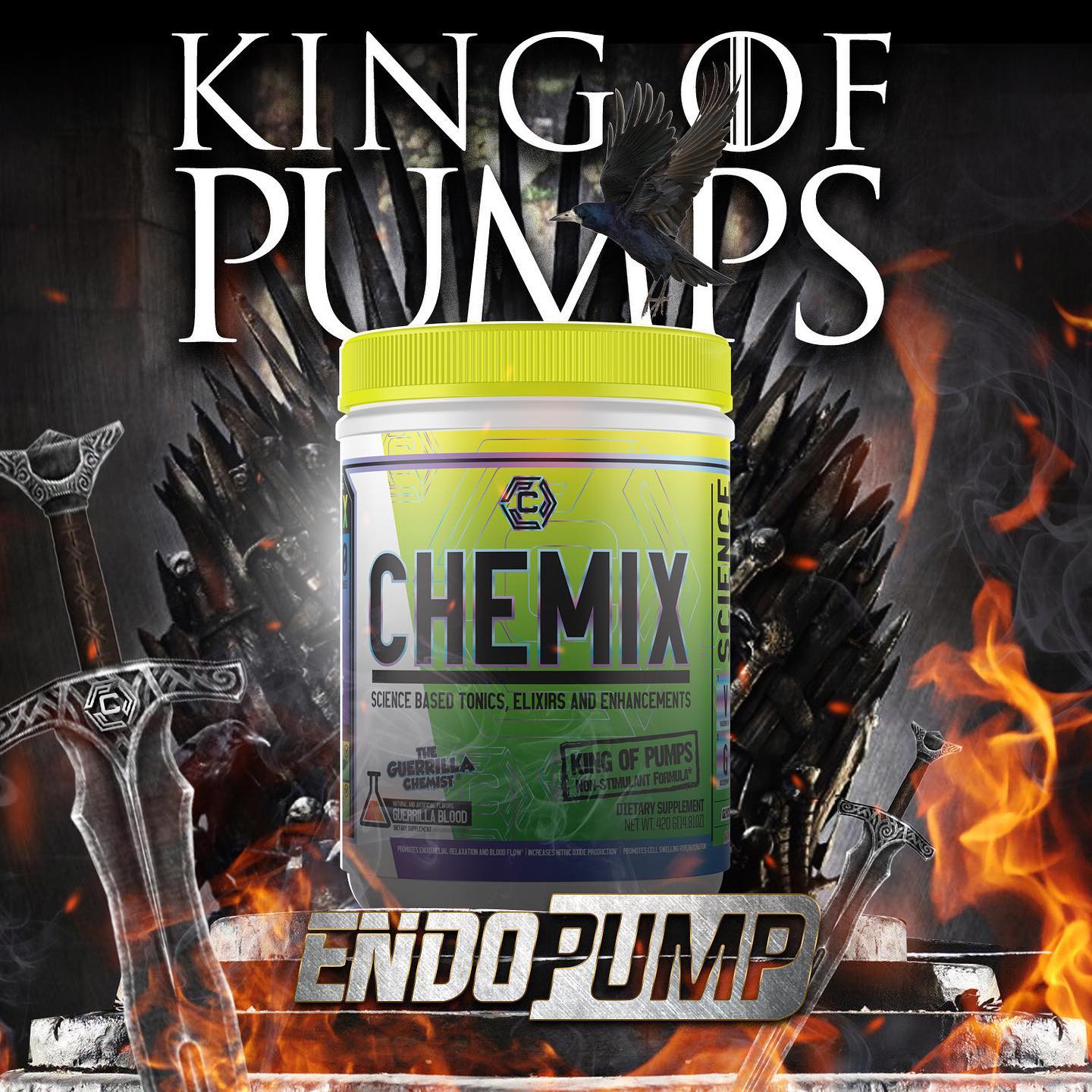
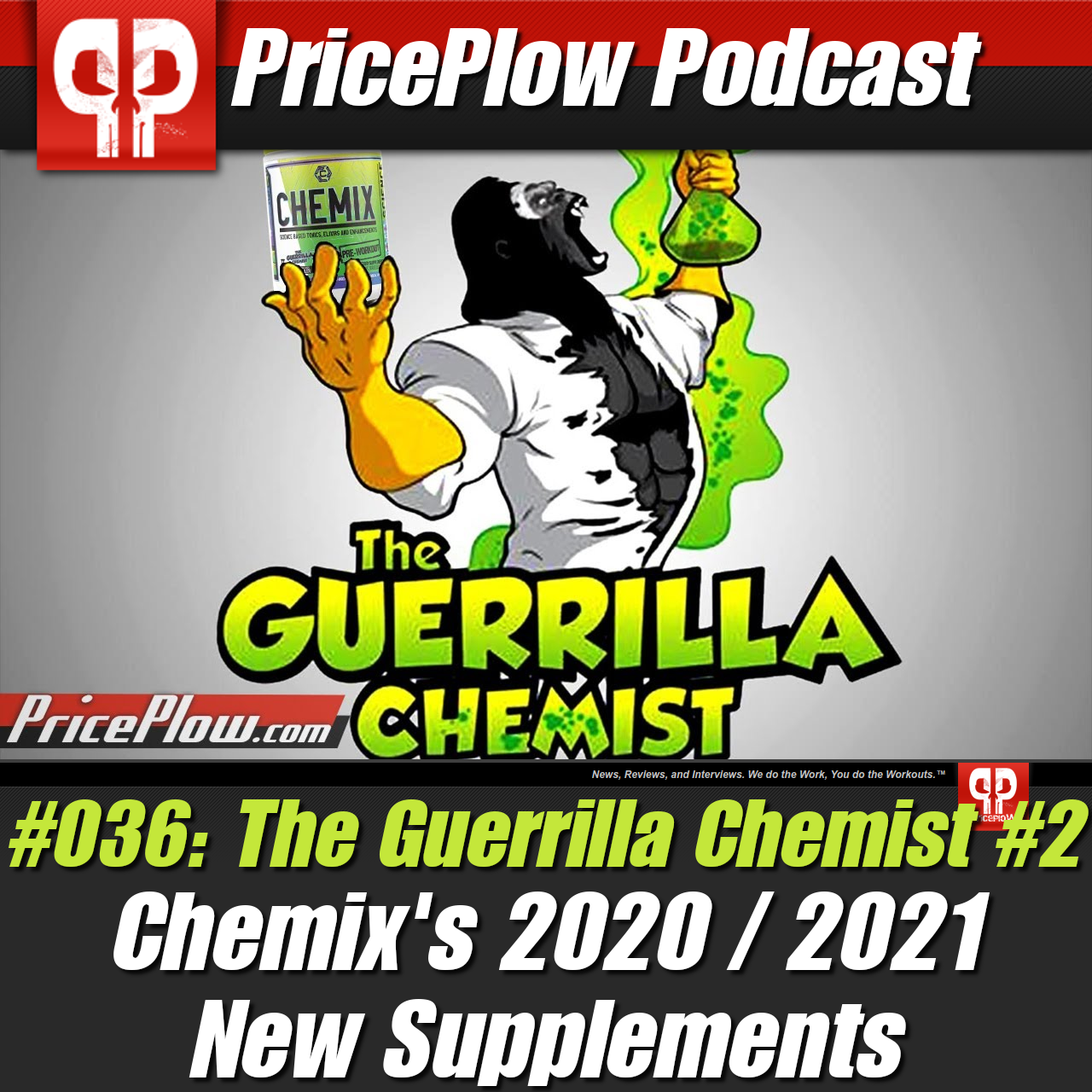
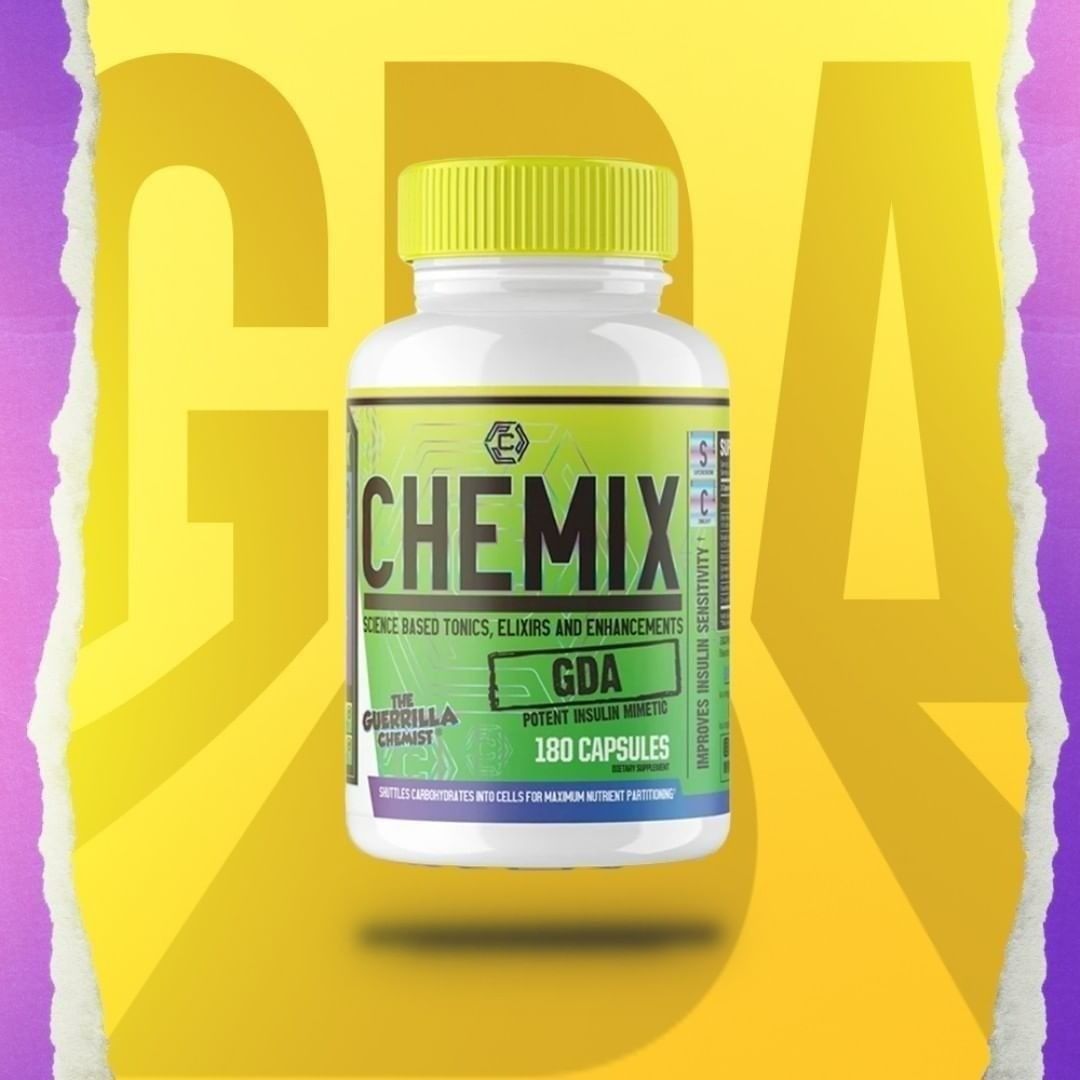
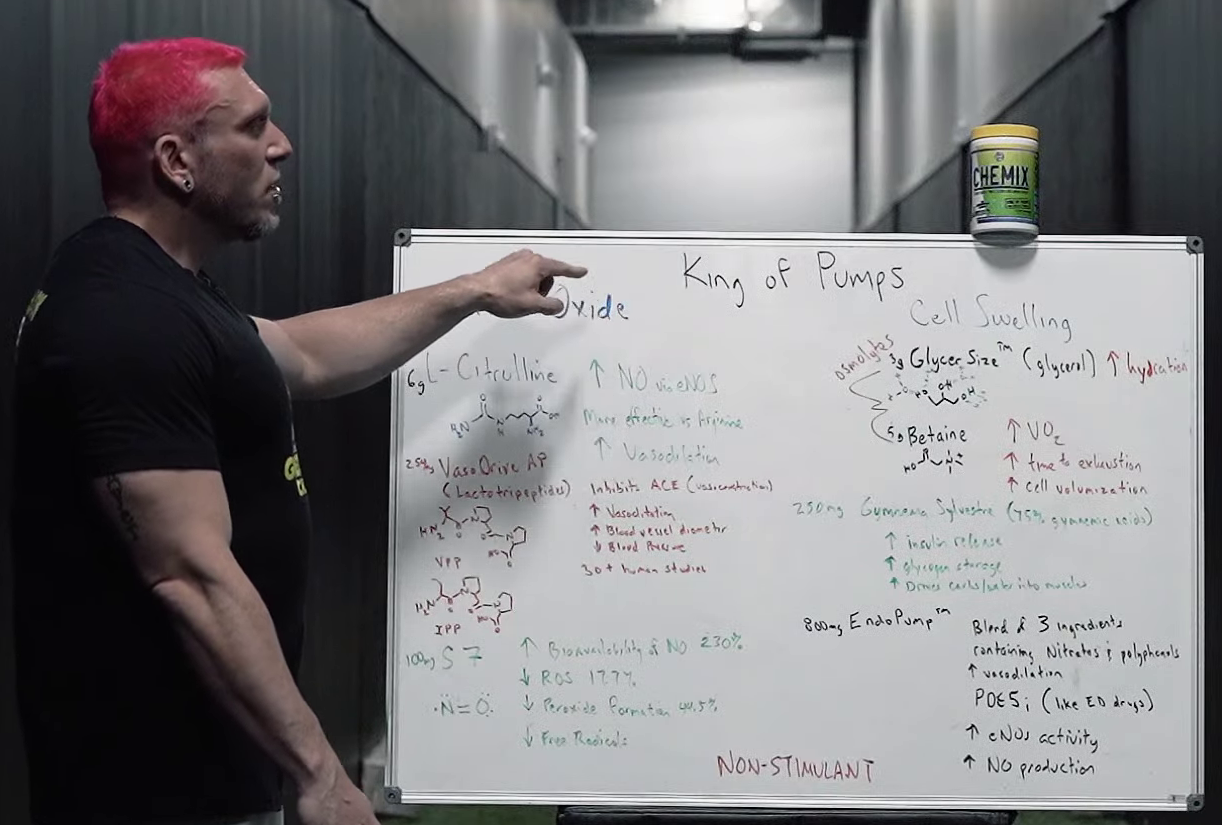
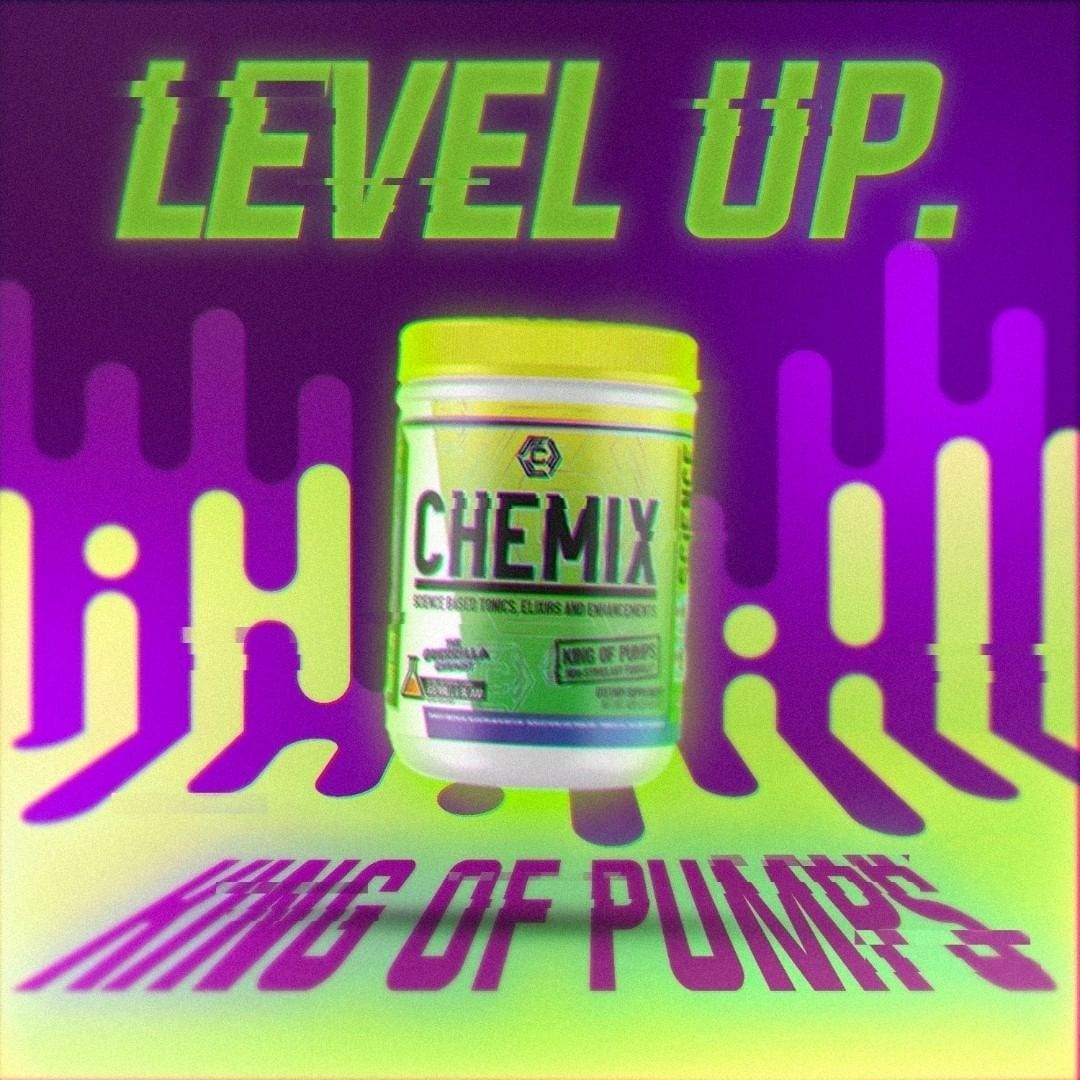


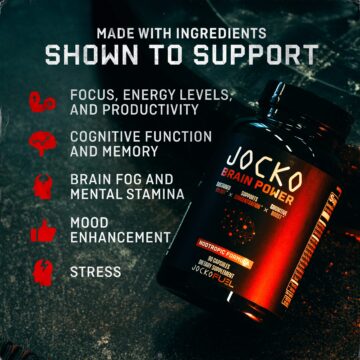
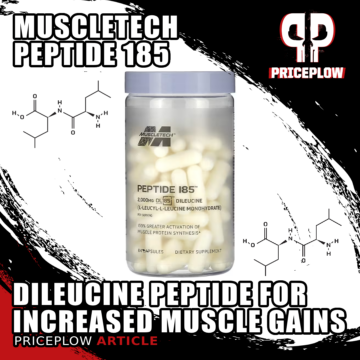
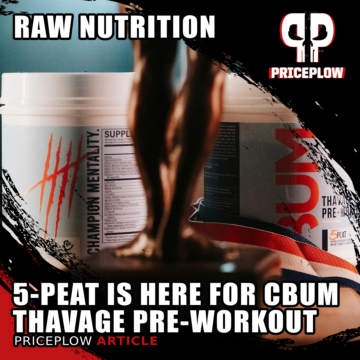
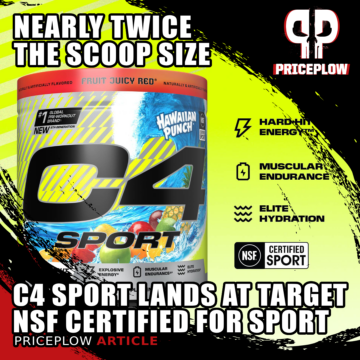

Comments and Discussion (Powered by the PricePlow Forum)